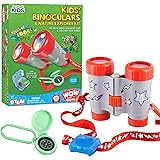Genius Gardening Ideas for Growing Your Own Fruits and Vegetables
Transforming your garden into a thriving oasis is easier than you might think, especially when armed with a few clever tricks and creative approaches. The video above showcases some truly ingenious gardening ideas, from propagating your favorite fruits and vegetables from seeds and scraps to crafting imaginative planters and implementing smart watering systems. This guide will expand on those brilliant concepts, offering deeper insights and practical tips to help you cultivate a bountiful harvest and elevate your outdoor (or indoor) green space.
Mastering Seed Starting: From Scraps to Sprouts
Growing your own fruits and vegetables from seeds or kitchen scraps is a deeply rewarding aspect of home gardening. It’s like unlocking a secret level of self-sufficiency, turning what might be discarded into a vibrant new life cycle. We’ll dive into specific techniques for some popular produce, making the journey from seed to sprout accessible and exciting.
Watermelon Wonders: Sweet Success from Seed
Cultivating watermelons can bring a taste of summer directly to your backyard. The video highlights a crucial step: softening the seeds. Soaking watermelon seeds for approximately four days helps break down their tough outer shell, significantly improving germination rates and giving your future melons a head start.
After this preparation, plant your seeds in well-draining soil and ensure they receive plenty of heat and direct sunlight. Watermelons are sun-worshippers, thriving in temperatures above 70°F (21°C) and needing ample space to spread their vines. Think of them as tiny sunbathers, soaking up every ray to produce juicy, sweet fruit.
Tomato Triumphs: Savory Harvests with Simple Steps
Tomatoes are a staple in many home gardens, and growing them from seeds is surprisingly straightforward. The video’s tip about drying seeds for 5-7 days before storage is key; this prevents mold and preserves viability for future planting seasons, much like preserving a good memory for later enjoyment.
Another excellent suggestion is using eggshells as biodegradable pots and a natural fertilizer. Eggshells are rich in calcium, which can help prevent blossom end rot, a common tomato issue. Plant your eggshell-encased seedlings directly into the garden once they’re strong enough, allowing nature to take its course.
Cucumber Cultivation: Hydration is Key
Cucumbers are prolific growers, especially when given the right conditions. A clever trick to ensure viable seeds is demonstrated in the video: good seeds will sink when placed in water. This simple float test helps you select the strongest seeds, maximizing your chances of a successful harvest.
Once planted, cucumbers demand a lot of water, particularly during their growth phase, often needing up to an inch of water per week. Consistent moisture helps prevent bitter-tasting fruits and ensures a bountiful yield, like a well-hydrated athlete performing at their peak.
Onion Revival: Regrowing for Endless Flavor
Don’t toss those onion roots! The video shows how easily you can regrow onions from their root ends. Simply cut off the bottom inch or two of an onion, ensuring some root strands are still attached, and place it in a shallow dish of water. New green shoots will emerge surprisingly quickly, ready to be planted.
Once planted in soil, these sections will continue to grow, providing fresh green onions or even developing new bulbs over time. It’s a fantastic way to stretch your groceries and always have fresh onions on hand, a testament to nature’s regenerative power.
Pineapple Paradise: Tropical Growth at Home
Growing a pineapple from its crown is a fun, tropical experiment that even novice gardeners can try. The process involves twisting off the top, removing the lower leaves to expose the stem, and then rooting it in water.
Change the water every 2-3 days to prevent rot, and place the bottle in a bright location. Once roots develop, plant the crown in well-draining soil. Pineapples thrive in warm conditions, ideally between 68-77°F (20-25°C), making them perfect for sunny windowsills or warm climates. It’s like bringing a slice of the tropics right into your living space.
Strawberry Sensations: Berry Good Gardening
Strawberries can be grown from the tiny seeds embedded in their skin. The video illustrates carefully removing these seeds with a toothpick. These delicate seeds require a bit of patience and specific conditions to germinate successfully.
After planting, keep the pots out of direct, harsh sunlight and water them regularly, maintaining consistent moisture. Once the seedlings are robust, transplant them carefully into the ground, being mindful not to damage their tender roots. Soon, you could be enjoying your own sweet, homegrown strawberries, a delicious reward for your efforts.
Citrus Sprouts: Zesty Ventures from Seeds
Starting an orange tree from seed is an engaging project, even if it takes years to produce fruit. The process begins with planting fresh seeds from a ripe orange in well-draining potting soil. It’s a long-term investment, much like saving for retirement, but the greenery is immediate.
Consistent watering and regular misting are crucial for orange sprouts, as they prefer humid conditions. While a mature fruiting tree might require significant space and time, nurturing a small orange plant provides beautiful foliage and a pleasant citrus aroma, adding a vibrant touch to any room.
Raspberry Rewards: A Berry Patch in the Making
Raspberries can also be grown from seed, though it’s a longer process than starting from cuttings. The video’s method of crushing raspberries and washing the seeds through a sieve is an effective way to separate them from the pulp. Thoroughly dry the cleaned seeds before planting to prevent mold.
Young raspberry shoots need shade and consistently moist ground, especially in their early stages. Planting them in cooler weather helps them establish without the stress of intense heat. Think of raspberry canes as shy teenagers; they need a sheltered start before they can flourish into productive plants.
Pumpkin Patch Power: Growing Giant Gourds
Growing pumpkins from seed is a classic gardening endeavor, perfect for creating your own autumn harvest. The video suggests rinsing and drying pumpkin seeds in the sun before planting, which helps prevent fungal issues and prepares them for germination. This is a common practice for many large seeds.
After planting, be patient; it can take about a month for pumpkin sprouts to emerge. For bigger, sweeter pumpkins, enrich your soil with plenty of organic matter or compost. Fertilized soil provides the necessary nutrients for these hungry gourds to grow impressively large, much like a hearty meal fuels a growing child.
Avocado Adventures: From Pit to Plant
The popular avocado pit method, seen in the video, involves suspending the pit in water using toothpicks. This allows the pit to sprout roots and a stem. Germination can vary wildly, from a week to two months, a true test of a gardener’s patience.
Planting the rooted pit in soil, especially in spring, encourages faster and more vigorous growth. Avocado plants love bright light but can be sensitive to direct, intense sun, particularly when young. While an avocado tree grown from a pit may take many years to fruit (if ever), it makes for a beautiful and unique houseplant.
Peach Perfection: Nurturing Stone Fruit Trees
Growing a peach tree from a pit is another exciting project for those with patience. After extracting the pit, you can plant it directly into soil. Peaches require a period of cold stratification to break dormancy, so planting in the fall or mimicking winter conditions in a refrigerator is often beneficial.
Once planted, place the pot in the brightest available spot and water it regularly. As the young peach plant grows, it will need to be transplanted to a larger container or directly into the garden. Nurturing a peach tree from a humble pit offers a profound connection to nature’s cycle, watching a potential orchard spring from a single stone.
Bell Pepper Bounty: Colorful Yields from Seeds
Bell peppers are versatile vegetables that are relatively easy to grow from their seeds. The video illustrates planting bell pepper seeds in eggshells, a fantastic way to give them a calcium boost from the start. These seeds are quite adaptable when it comes to germination, tolerating various lighting conditions.
However, once the sprouts emerge, good lighting becomes essential for strong, healthy growth. Place your bell pepper seedlings in a sunny window or under grow lights to ensure they don’t become leggy. With proper care, these plants will produce vibrant, sweet bell peppers, adding color and flavor to your meals.
Innovative DIY Garden Projects & Smart Solutions
Beyond growing edibles, the video also sparks inspiration for creative garden design and practical plant care solutions. These DIY projects are excellent ways to personalize your space and make gardening more manageable and enjoyable.
Crafting Creative Planters: Beyond Basic Pots
Why settle for ordinary pots when you can create unique vessels for your plants? The video demonstrates several ingenious DIY plant pot ideas, like transforming tin cans into charming wooden barrel-style containers using clothes pegs and twine. This turns a simple discarded item into a rustic showpiece.
Another innovative approach is using cardboard frames and paper cups to construct vertical wall planters, perfect for succulents or artificial plants. These projects are not only budget-friendly but also allow for personal expression, turning everyday objects into functional art. It’s like giving your plants their own custom-designed outfits.
Smart Watering Solutions: Keeping Your Plants Hydrated
Watering plants can be a chore, especially when you’re away or have many plants. The video presents a simple, yet effective, self-watering system using a pot of water and yarn wicks. By placing one end of the yarn in a water reservoir and the other in the plant’s soil, capillary action draws water to the roots, keeping plants hydrated for days.
This ingenious method acts like a slow-release IV drip for your plants, ensuring they receive a steady supply of moisture without being overwatered. It’s a perfect solution for busy gardeners or when planning a vacation, offering peace of mind that your green friends are well cared for.
Space-Saving Vertical Gardens
For those with limited space, vertical gardening is a game-changer. The video inspires with ideas like stacked tin cans to grow herbs vertically, labeling each tier for easy identification. This not only saves floor space but also adds an attractive, organized element to your garden.
Another brilliant concept involves creating hanging planters from popsicle sticks or cardboard and twine. These lightweight solutions can suspend plants at various heights, making use of vertical air space and adding dynamic visual interest. It’s like building multi-story homes for your favorite botanicals.
Sustainable Self-Watering Systems
Plastic bottles, often destined for landfills, can be repurposed into clever self-watering systems. The video shows how a cut plastic bottle, inverted over a smaller pot, creates a mini greenhouse effect and a water reservoir. This helps maintain humidity and provides a consistent water supply from the bottom up.
Such systems are fantastic for herbs or small seedlings, promoting steady growth and reducing water waste. It’s a prime example of upcycling, where discarded items find new life in supporting sustainable gardening practices. These clever contraptions act like personal gardeners, ensuring your plants never go thirsty.
These gardening ideas, from growing a wide array of fruits and vegetables to crafting imaginative planters, demonstrate that successful home gardening is accessible to everyone. With a bit of creativity and practical knowledge, you can cultivate a thriving garden that brings joy and fresh produce right to your doorstep. Happy gardening!







